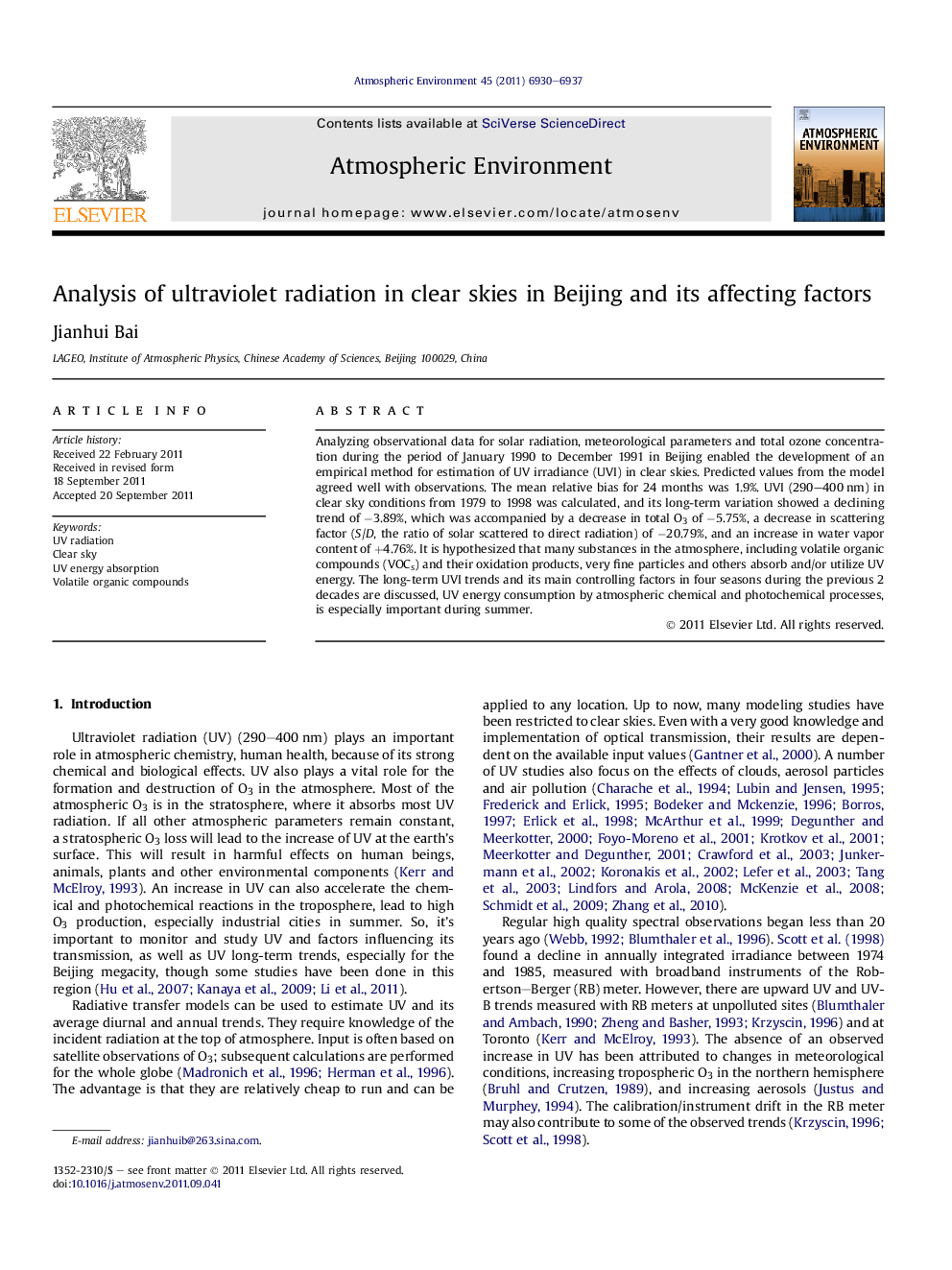| Article ID | Journal | Published Year | Pages | File Type |
|---|---|---|---|---|
| 4439494 | Atmospheric Environment | 2011 | 8 Pages |
Analyzing observational data for solar radiation, meteorological parameters and total ozone concentration during the period of January 1990 to December 1991 in Beijing enabled the development of an empirical method for estimation of UV irradiance (UVI) in clear skies. Predicted values from the model agreed well with observations. The mean relative bias for 24 months was 1.9%. UVI (290–400 nm) in clear sky conditions from 1979 to 1998 was calculated, and its long-term variation showed a declining trend of −3.89%, which was accompanied by a decrease in total O3 of −5.75%, a decrease in scattering factor (S/D, the ratio of solar scattered to direct radiation) of −20.79%, and an increase in water vapor content of +4.76%. It is hypothesized that many substances in the atmosphere, including volatile organic compounds (VOCs) and their oxidation products, very fine particles and others absorb and/or utilize UV energy. The long-term UVI trends and its main controlling factors in four seasons during the previous 2 decades are discussed, UV energy consumption by atmospheric chemical and photochemical processes, is especially important during summer.
► An empirical model for studying UV irradiation (UVI) in Beijing was established. ► The predicted UVI in clear skies agreed with observations. ► UVI in Beijing in clear sky from 1979 to 1998 showed a declining trend of −3.89%. ► An unexpected UVI decrease in summer and its mechanism were discussed. ► UV loss by the GLP utilization plays an important role and should be studied.
